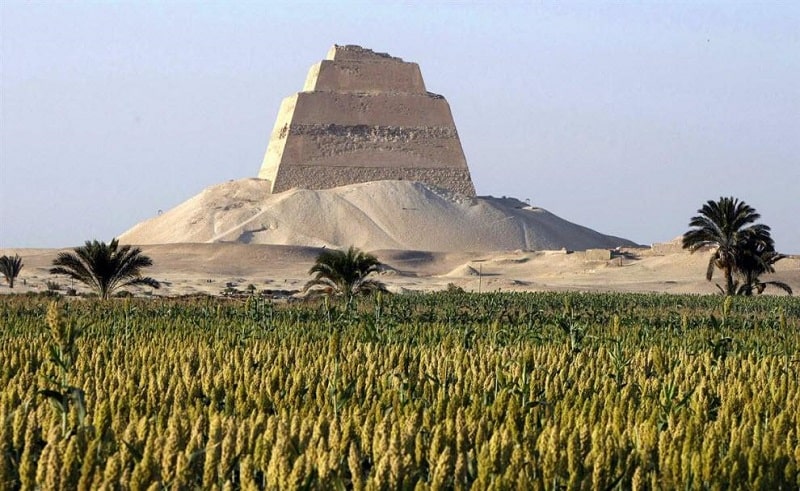1. Beni Suef Overview:
Beni Suef is a city located in central Egypt along the Nile River. It serves as the capital of the Beni Suef Governorate and is situated about 115 km south of Cairo. The city has a rich history and is known for its agricultural significance, particularly in the production of cotton and other crops.
Beni Suef is also a hub for trade and industry, with various factories and industrial facilities contributing to the local economy. In addition to its economic role, the city is home to several educational institutions, including Beni Suef University, which contributes to the region’s academic and cultural landscape.
The city’s location along the Nile offers picturesque views and contributes to its appeal as a destination for both locals and tourists. Beni Suef’s proximity to historical sites and attractions, such as the nearby pyramid complexes of Dahshur and Hawara, adds to its significance within Egypt’s cultural heritage.
2. The historical landmarks in Beni Suef, such as ancient temples, mosques, or archaeological sites:
Pyramid Complexes at Dahshur: Located near Beni Suef, the Dahshur necropolis is home to several ancient Egyptian pyramid complexes, including the famous Bent Pyramid and the Red Pyramid.
Meidum Pyramid: Situated approximately 100 kilometers north of Beni Suef, the Meidum Pyramid represents one of the earliest examples of a true smooth-sided pyramid in Egypt.
Beni Suef Museum: The city itself is home to a museum that offers exhibits on the local history, as well as artifacts from nearby archaeological sites. The museum provides visitors with a glimpse into the cultural and historical heritage of the region, including information about ancient Egyptian, Greco-Roman, and Islamic periods.
Islamic Architecture: Beni Suef features a number of historical mosques and Islamic architectural sites that reflect the region’s cultural and religious significance.
Archaeological Sites: Throughout the Beni Suef Governorate, there are various archaeological sites that offer insights into ancient Egyptian, Greco-Roman, and Islamic civilizations.
3. The natural beauty of Beni Suef, including any parks, gardens, or scenic landscapes:
1. Nile River: As the lifeline of Egypt, the Nile River is not only historically significant but also adds to the natural charm of Beni Suef. The city’s location along the river provides opportunities for scenic boat rides, leisurely walks along the riverbanks, and enjoying sunsets over the water.
2. Agricultural Fields: Beni Suef is known for its agricultural significance, and the surrounding countryside is adorned with fields of vibrant crops, particularly cotton and other produce. The greenery of the agricultural lands adds to the visual appeal of the region and offers a glimpse of rural life in Egypt.
3. Waterfront Parks and Gardens: While Beni Suef may not have large public parks in the traditional sense, there are often small waterfront parks or gardens where locals and visitors can relax, take in the river views, and enjoy some green space within the city.
4. Desert Landscapes: Beyond the cultivated lands, the region surrounding Beni Suef transitions into the desert, offering stark and striking landscapes. The contrast between the fertile farmland and the arid desert creates a unique natural tapestry that is characteristic of Egypt’s diverse terrain.
5. Scenic Drives: The roads leading into and out of Beni Suef often offer scenic drives that showcase the natural beauty of the area. Whether traveling along the Nile or through the desert, visitors can appreciate the changing landscapes and natural vistas.
4. Activities available in Beni Suef:
1. Desert Safaris: The desert landscapes surrounding Beni Suef provide an ideal setting for desert safaris, allowing visitors to explore the rugged terrain, sand dunes, and oases. Adventure tours may include off-road excursions by 4×4 vehicles, camel rides, or even overnight camping experiences under the stars.
2. Hiking and Trekking: The desert and semi-arid landscapes in the vicinity of Beni Suef offer opportunities for hiking and trekking adventures. Guided hikes can lead visitors to scenic viewpoints, ancient archaeological sites, or through lesser-known paths that showcase the natural beauty of the region.
3. Nile River Cruises: While not necessarily an adventure in the traditional sense, a leisurely cruise along the Nile River can offer a unique perspective of the region. Whether by traditional felucca sailboats or motorized vessels, river cruises provide a relaxing way to take in the scenery and observe life along the riverbanks.
4. Cultural Tours: For those interested in history and culture, guided tours of historical sites such as the pyramid complexes at Dahshur, the Meidum Pyramid, and the Beni Suef Museum can provide a deeper understanding of the region’s rich heritage.
5. Water Sports: While opportunities for water sports may be limited, depending on the specific location and season, certain areas along the Nile River may offer activities such as kayaking, canoeing, or stand-up paddle boarding.
Overall, Beni Suef Governorate serves as a multifaceted destination, offering a compelling mix of historical, cultural, and natural attractions, showcasing the rich heritage and character of central Egypt.



Comment (0)